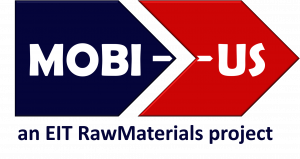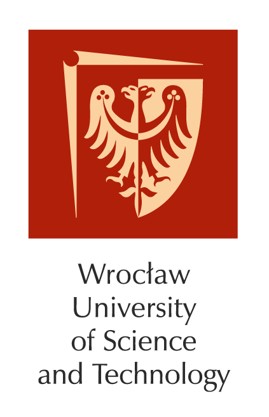
Pathway 9


MINING ENGINEERING
Pathway 9 is the reversal of Pathway 8, offering mobility for mining engineering students from Wroclaw to spend their second semester at the University of Zagreb, faculty RGNF. This pathway is offered for students of the Mining and Geology MSc, Mining engineering specialization of the WUST. The main driving force of this mobility is the specific competencies in blasting and related applications – design of different types of underground chambers, tunnelling, demolition – which make a strong side of the Mining and Geotechnics specialisation of the Mining Engineering MSc in Zagreb.
CONTACT
Ass. prof. Vječislav Bohanek:

1st - summer [ECTS]
Theory and practice in geomechanics [6]
Computer Aided Geological Modelling and Geostatistics [5]
Project management, appraisal and Risk Evaluation [4]
Engineering Geophysics [3]
Integrated analysis of deformations in geomechanical engineering [5]
Foreign language [2]
Excavation design in open pit mining [5]
[30]

3rd - summer [ECTS]
Mineral processing systems [3]
Free elective [2]
Foreign language [1]
Digital mine [2]
Operation research [3]
Diploma seminar [2]
Free elective [2]
Master thesis [15]
[30]

Course descriptions of the mobility semester
- Course aims: Mining and geotechnical activities are closely connected with soil mechanics which is used to analyse the shear strength and deformations within natural and man-made soil structures or structures that are in soil.
The objective is to provide students with knowledge of applications of limit equilibrium and limit plasticity analysis methods to stability problems in geotechnical engineering, such as slopes, lateral earth pressures on retaining structures, and bearing capacities of foundations.
The major goals that are covered in this course are:
– introduction to the Eurocode system with an emphasis on the Eurocode 7,
– interpret geotechnical investigations,
– analyze foundations, retaining walls and piles with analytical methods,
– analyze foundations, retaining walls and piles with FEM,
– analyze slope stability by limit equilibrium methods (global factor of safety),
– assess ground-water effects on different geotechnical structures. - Requirements: Soil Mechanics 1. Pass.
- Expected outcomes: Students will be able to:
– introduce Eurocode 7 in geotechnical engineering practical application,
– interpret geotechnical investigations,
– design foundations, retaining walls and piles using analytical methods,
– design foundations, retaining walls and piles using FEM,
– analyze natural and man-made slopes stability by limit equilibrium methods (global factor of safety),
– assess ground-water effects on different geotechnical structures,
– evaluate shear strength parameters for the analyses (drained and undrained behaviour and parameters).
- Course aims: Introduction to surface geophysical research with practical application of methods in defining geological structure and terrain composition.
- Requirements: Basic courses in physics.
- Expected outcomes: Students will be able to:
1. Demonstrate understanding of theoretical principles that are base for geophysical methods.
2. Define research methodology and data to be used.
3. Process and analyze collected geophysical data (electric, seismic and magnetic).
4. Apply appropriate modelling methodology
5. Infer physical properties of the underground by surface geophysical methods.
- Course aims: Major goals of this course are:
– Design, execution and supervision of blasting works during excavation and exploitation of mineral raw materials, construction of infrastructural facilities: roads, construction pits, hydropower facilities, underground chambers and tunnels, and other structures.
– Design, execution and supervision of special blasting works such as demolition and underwater blasting. - Expected outcomes: Students will be able to:
– Define Blasting Technologies.
– Describe the legislation in the field of explosive substances and Mining.
– Explain the impact of detonation of explosives to the environment-rock, water, Air.
– Choose and calculate the blasting parameters of certain blasting types.
– Recommend Blasting method.
– Plan and organize blasting works.
– Predict the impact of blasting on the environment.
– Choose the technique and blasting parameters with respect to rock mass, efficiency and blasting costs.
- Course aims: The aim is to familiarize students with methods of making horizontal, inclined and vertical underground chambers.
- Expected outcomes:
-To know the types and features of underground chambers,
-Understand the properties of the working environment essential for the application of the construction method of underground chambers,
-To know the construction methods for certain types of underground chambers,
-Know how to use the underground chamber excavation method.
- Course aims: Obtaining theoretical and practical knowledge about rock, primary and secondary supporting system interaction, which in turn results in successful tunneling.
- Expected outcomes: Understanding of basic terms in tunneling. Application of previously obtained knowledge from the fields of rock mechanics, soil mechanics and geology. Ability to set up and independently solve calculation models. Independent analysis of results.
Students will be able to:
– Explain and describe basic terms in tunneling
– Describe classical and modern tunnel excavation methods
– Describe the interaction between a rock and primary and secondary supporting system
– Calculate the stress near underground chamber opening
– Recommend excavation technology
– Plan and organize working area on a tunnel site
– Predict and solve any possible problems that can be presented during tunnel excavation
- Aim: Adoption of basic concepts from the area of probability and their application in building models for statistical analysis. Getting acquainted with basic statistical methods and acquiring skills for their application in technology and natural sciences.
- Requirements:
Conditions: none.
Competences: basic calculus (function derivative, integral, limit). - Expected outcomes: Use basic knowledge in the field of technical and natural sciences. Solve medium complex problems in geological engineering and geology, as well as in other areas which use the results of research in geological engineering and geology and apply them. Select and apply the appropriate analytical methods and procedures and equipment required in laboratory and field research. Use current information technologies to collect and process data collected through new research or from existing literature, databases and other sources of information. Analyse the chemical and morphological composition of the rock. Understand the impact of petroleum – mining works on the environment. Supervise the work and operation of oil and gas production, equipping, production, transport and storage systems. Understand the geological processes, rock formation and mineral raw materials deposits formation, engineering geo-geological and hydrogeological relationships, soil mechanics and rocks, and of mineral and chemical composition of rock. Planning, conducting and controlling mining and geophysical investigations for the purpose of establishing reserves of solid mineral raw materials and conducting engineering works in soil and rock. Analysis and interpretation of data collected by field and laboratory research, and determination of quality of mineral raw materials. Application of analytical and numerical methods in the assessment of the state and behavior of geological materials during engineering works and construction of various geotechnical objects in soil and rocks. Planning and implementation of geotechnical and geophysical investigations and their monitoring for the purpose of carrying out engineering works in soil and rock and establishing reserves of solid mineral raw materials. Analysis and interpretation of field and laboratory research results. Understanding the complex physical-chemical relations in the air, water, soil, multiphase fluid flow through the soil / rock, geochemical and mineral relations in the soil and rock, and the ability to identify, quantify and solve the associated problems. Modeling and numerical calculations of environmental pollution spreads.
After passing the exam, students will be able to:
– define the concept of a random event and basic operations with events;
– apply basic combinatorial terms (variations, permutations, combinations), the complete probability formula and the Bayesian formula when calculating probabilities of events;
– explain the concept of discrete and continuous random variable and calculate their parameters (mathematical expectation, variance, standard deviation);
– define binomial, Poisson and normal distribution and apply them in calculating probabilities of events;
– graphically display statistical data and calculate the basic characteristics of the data set (arithmetic mean, variance, standard deviation);
– perform a point and an interval estimate of an expectation and variance of a random variable;
– test a statistical hypothesis with a properly selected statistical test (F-test, t-test, chi-square test);
– apply a linear regression model when examining the dependence of the two characteristics of the observed phenomenon;
– correctly interpret the results of statistical methods;
– apply programming language R in solving statistical problems.
- Aims: Understanding the basic concepts, basic laws and principles relating to the measurement techniques. Use of basic and advanced statistical tools to analyze the measurement results. Calculating measurement errors of indirect measurements. Use signal properties for the purpose of performing quality measurements. Getting acquainted with the properties and limitations of measuring transducers (sensors). Calculation of the measurement uncertainty of the result.
- Expected outcomes: Know how to calculate the statistical parameters of measurement results, calculate the error of measurements. Analyze measurement system properties and evaluate the errors and the scale of their impact on the measurement result. Calculate the measurement uncertainty of simple measurement procedures.
- Aims: Introduction to surface geophysical research with practical application of methods in defining geological structure and terrain composition.
- Requirements: Basic courses in physics.
- Expected outcomes:
Students will be able to:
1. Demonstrate understanding of theoretical principles that are base for geophysical methods.
2. Define research methodology and data to be used.
3. Process and analyze collected geophysical data (electric, seismic and magnetic).
4. Apply appropriate modelling methodology.
5. Infer physical properties of the underground by surface geophysical methods.

